|
|
|
|
Products mentioned in this Article
|
|
|
|
|
|
|
|
|
 |
|
|
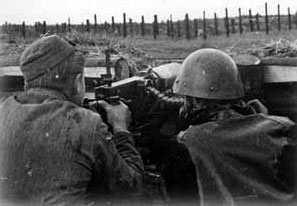 |
The Lion and The Eagle Part Three
The Soviet Counterattack at Kiestinki
Return to Part Two...
The Soviet high command realised that the Finnish 3rd Corps at Kiestinki was still the force with the best chance to cut the Murmansk railway. Not knowing that the Finnish government had ordered 3rd Corps not to pursue the objective further, the Soviets organised a large counterattack as soon as they were able in early 1942.
|
Despite the failure of the attempt to use German tanks in the inaccessible region, the Soviet high command proceeded to make the same mistake when it was their turn to assault. Stavka formed a powerful attacking force into the Soviet 26th Army. The units were:
186th Division
263rd Division
23th Guards Division (former 88th Division)
67th Marine Brigade
80th Marine Brigade
8th Independent Ski Brigade (199th, 200th and 201st independent ski battalions)
|
There were also two supporting armoured units attached from Northern Front reserves, 374th Separate Tank Battalion, with light tanks, and 376th Separate tank Battalion, with T34s and KVIs. Thus the attack was supported by 2 companies of T34s, 1 company of KVIs, and 2 or 3 companies of either T26, T50 or T60 (light tank type unknown).
|
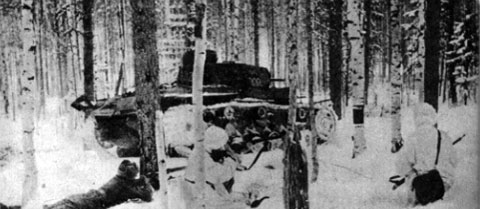 |
There was only a single narrow road for the entire force to deploy from
and be supplied. In fact, three other Soviet tank battalions (375th,
377th, and 429th) were in the area but did not reach the front.
The Finnish/German defence was composed of a combined force of Finnish Division J, 11th brigade, 35th Rajajääkäriosasto (Border Jäger Detachmennt) and German PzAbt Z.bV 40, and 6th SS (Nord). By now SS Nord had been reorganised as a more appropriate Gebirgsjager Division and with more experience fought much better. The attack began on 25 april 1942, with a company of KVIs and T34s leading the way. But Finnish anti-tank guns covering the single road corridor knocked out one KV, and the others became bogged. The accompanying Soviet infantry could not break the Finnish and German defence lines without their help. They stubbornly tried several times to break through, and made some gains before heavy infantry losses saw the attack lose impetus. The few slight gains were recovered by a Finnish counterattack in May. After that the front remained quiet until 1944.
|
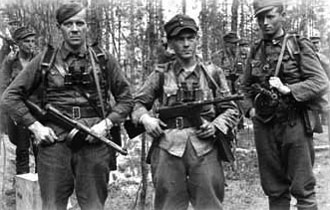 |
By the end of 1942 Finnish – German cooperation was waning. Finnish Marshall Mannerheim insisted that Germany return the Finnish battalions attached to the Norwegian army to Finnish control. The Finns had no intention of fully allying with the Germans, while they in turn were frustrated with the Finnish refusal to attack Leningrad or beyond the Svir River. Perhaps neither had at first fully realised the extent of ideological differences either.
|
For example, in Finland anti-semitism was not condoned and Jewish were expected to fight in the army and did so. A total of 8 Jewish refugees had been handed over to Germany before Nazi policies were understood, after which the practice promptly stopped. By 1943 even the battalion of Finnish volunteers serving with SS Wiking (most hardcore anti-communists rather than pro-fascist) decided to return home.
|
1944 Soviet Summer Offensive
German units remained in Finland opposing Soviet forces throughout 1942 and 1943, but joint offensive action had ceased. In the Soviet summer offensive of 1944 Finland was desperate and once again appealed for German help. Marshall Mannerheim personally appealed to Hitler, and prime Minister Ryti promised that if assistance was granted he would not make peace with the Soviet union.
|
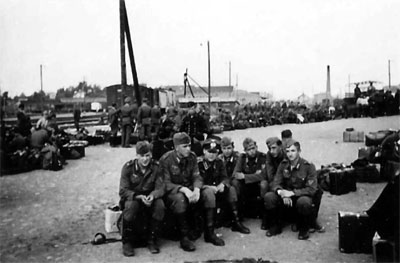 |
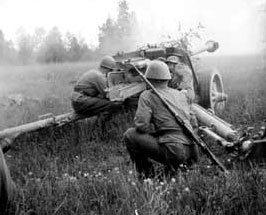 |
Desperate to keep Finland in the war so that Soviet infantry would remain occupied on the northern front, Germany provided panzerfausts, panzerschrecks, armoured vehicles and transferred an air unit.
Even then the German and Finnish forces did not actually fight together. Most of the weapons were issued to Finnish troops and used by them. The military forces of the two countries remained under their respective command structures. The exception was Air group Kuhlmey.
|
It liaised directly with Finnish headquarters and performed a vital (and very little publicised) role in interdicting Soviet tank columns on the road to the front at the decisive battle of Tali-Ihantala in July-August 1944.
That was to be the last example of Finnish-german military cooperation in World War Two. Although the Soviet offensive had been stopped, Stalin’s peace terms were harsh, and Finland had to forceibly expel any German troops remining in Finland.
Thus began the Lapisota, when Finnish untis fought to push the German army back from Finnish Lapland into Norway from October 1944 to April 1945.
|
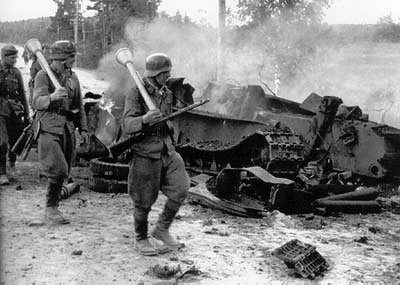 |
|
Sources
“Talvisodan Historia”, Finnish Official History of the Continuation War, 1941-1944.
“Reasons behind the Finnish “Continuation War” 1941 –
1944”: web article by Sami Korhonen (Finland) Webmaster of “The Battles
of Winter War”
“Waffen SS: Hitler’s Elite Guard at War”, by George Stein
Maps: www:sodatkuvina website
Photos: Wikipedia and Finnish Military Page websites
With thanks to Jyrki Sari for providing access to Finnish language sources.
|
Last Updated On Friday, January 29, 2010 by Blake at Battlefront
|
|
|